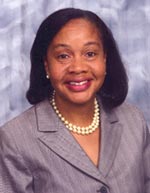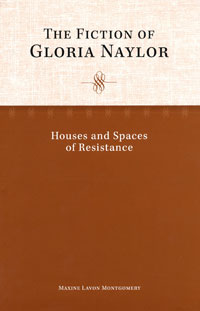 Maxine Montgomery first met author and educator Gloria Naylor during her editorial work on Conversations With Gloria Naylor (UP Mississippi, 2004), a collection of fourteen personal and professional interviews that Naylor gave to various sources. The interviews range from 1983, which was soon after the publication of Naylor's first novel, The Women of Brewster Place, to 2000, following the publication of Naylor's The Men of Brewster Place. The two became friends, with Montgomery visiting Naylor at her home in Brooklyn in 2003 and Naylor visiting Florida State University at Montgomery's request in 2005.
Maxine Montgomery first met author and educator Gloria Naylor during her editorial work on Conversations With Gloria Naylor (UP Mississippi, 2004), a collection of fourteen personal and professional interviews that Naylor gave to various sources. The interviews range from 1983, which was soon after the publication of Naylor's first novel, The Women of Brewster Place, to 2000, following the publication of Naylor's The Men of Brewster Place. The two became friends, with Montgomery visiting Naylor at her home in Brooklyn in 2003 and Naylor visiting Florida State University at Montgomery's request in 2005.
"I have long admired her work, mainly because of the ways in which she recaptures various historical moments that have defined the twentieth-century Black experience," Montgomery says. "Although she is a native New Yorker, there is something intensely southern about her language and the ways in which her characters attempt to negotiate their complex reality. She writes a lot about the experiences of women—ordinary women who face seemingly overwhelming circumstances but manage to draw upon the sheer survival spirit of the folk and transcend life's difficulties.
"I would not label her a religious writer, but she is an extremely spiritual person and that spirituality lends a particular depth to her evolving canon."
Montgomery's most recent publication, The Fiction of Gloria Naylor: Houses and Spaces of Resistance (U of Tennessee P, 2010), "seeks to situate the myriad acts of insurgence in Naylor's first four novels within the larger frame of the places enabling black opposition to imposed restraint," she says. "The work engages the residual oral forms—symbolic acts of religion, speech, and music—revealing a confrontation with masculine authority."
 In the book, Montgomery argues that "the preeminent site serving as a locus for the historic quest for autonomy at the center of Naylor's narrative project is home, a nuanced, artificial construct bound with issues of nationhood and identity.
In the book, Montgomery argues that "the preeminent site serving as a locus for the historic quest for autonomy at the center of Naylor's narrative project is home, a nuanced, artificial construct bound with issues of nationhood and identity.
"Ultimately, I contend, in Naylor's canon as in the tradition of Black women's fiction, home is not exclusively architectural or geographic in nature," Montgomery continues. "Rather, it is a cultured, gendered space—one that closely resembles a symbolic signifying system bound with vexed issues of racial sovereignty and literary authority."
The Fiction of Gloria Naylor is one of the first critical studies of Naylor, and the volume stands out in particular because of its engagement with African-American vernacular forms and twentieth-century political movements.
"My study's unique contribution to African-American literary studies involves its attention to Naylor's inventive use of black slave historiography, tales of conjure and trickery, and verbal strategies relevant to masking, code switching, and role-playing—in short, the verbal strategies that have catapulted her to the vanguard of contemporary American/African-American letters," Montgomery says.
The Fiction of Gloria Naylor includes an interview that Montgomery carried out with Naylor at the author's home in May 2007. Montgomery followed up with a second interview in February 2009, following the historic election of Barack Obama as president.
Montgomery's next book project builds upon insights from The Fiction of Gloria Naylor in offering an investigation of the language and lore surrounding Vodoun, an Afro-Caribbean folk religion. The book focuses on "writerly" reenactments of Erzulie, Haitian goddess of love, in novels by authors in the Francophone Caribbean and America as well as popular culture. Included in the project are novels by Edwidge Danticat, Toni Morrison, Gayl Jones, Paule Marshall, Rosa Guy, and Tina McElroy Ansa. She is also editing a collection of new critical essays examining the close, yet ambivalent, relationship between Morrison's Beloved and A Mercy.

